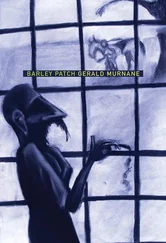The image of the front cover mentioned seemed always to the man mentioned a drab image. The image-cover was mostly white with black image-words appearing on its lower third. In some or another part of the upper third of the image-cover was an arrangement of blue and black and red image-discs. The man understood that the image-discs were intended to represent or to suggest glass beads of many colours. He had been given to understand this by a review of the book mentioned or, perhaps, by a paragraph on the rear cover of the book mentioned. He had been given to understand also that the book contained, among many other things, a report of a monastic community living in an isolated place at a date several hundred years later than the twentieth century and devoting much of their time to the playing of a game with many-coloured glass beads, each of which was intended to represent or to suggest one or another item or strand or theme in the history of civilisation. The author of the book was a German man who was considered by some persons a deep thinker and who had been born sixty-two years before the birth of the owner of the book.
For perhaps ten years after the man mentioned had bought the book mentioned, he had left it on one of his bookshelves without opening it, although he had sometimes handled the book and looked at its cover. The man often dealt thus with one or another book of fiction that he expected much from. During the years before he read such a book, he would foresee himself reading a book the contents of which he would not remember after he had begun to read the actual book although he would seem to remember them as having been richer than the actual contents. During the first few of the ten years mentioned, the man sometimes foresaw himself reading about an object that might have been a gigantic abacus with thousands of many-coloured glass beads strung on thousands of wires. During later years, the object in question might have been a gigantic billiard table on which rested or rolled thousands of beads of the sort mentioned. The beads mentioned in each of the two previous sentences were far from resembling the drab discs depicted on the cover of the book mentioned. They more resembled some of the thousands of glass image-marbles that the man had often looked at more than thirty years before in a coloured reproduction of a certain photograph in a certain issue of the National Geographic Magazine showing a certain part of a certain factory in a certain town in the state of West Virginia, which state the man saw in his mind during the sixty years after he had first read the issue of the magazine as a few valleys on the shaded side of a high, forested ridge of dark-blue mountains. The image-marbles mentioned were stored in a row of image-bins from which they flowed into image-bags under the supervision of a smiling, dark-haired young image-woman.
The man mentioned finally began to read the book mentioned in his fortieth year, according to the records that he kept of the books of fiction that he had bought and read. Thirty years afterwards, the man could remember nothing of his experience as a reader of the book. He knew that he had read the first hundred pages of the book because he had recorded that fact at some time during his fortieth year. He recalled, however, not one word of the text of the book, not one image that had appeared in his mind while he read the text, and not one thought or feeling that had occurred to him while he read. According to the man’s records, he had removed the book from his shelves four years after he had read the first hundred pages. He had then given the book, together with several other books by the famous German author, to a person who claimed to admire the author.
Thirty years after the man mentioned had read the first hundred pages of the book mentioned, he remembered sometimes a certain afternoon when he had been alone in his house while his wife and their children were elsewhere. On that afternoon, the man had first caught sight of a blue disc and a black disc and a red disc on the spine of a certain book on one of his bookshelves and had regretted, as he had often previously regretted, that he had read a hundred pages of the book. The man had next caught sight of an image of part of a glass marble on the spine of another of his books. This book was a hardcover work of fiction that the man had not yet read, although he had often admired the dust jacket and had sometimes read from the dust jacket a short account of the contents, so to call them. The man had then gone to his son’s room and had fetched back to the lounge room, which contained the bookshelves previously mentioned, a jar of glass marbles. The man had then poured the marbles onto the carpet in the lounge room and had stood back from the marbles and had stared at them and had felt while he went on staring at the many-coloured mass of them something of what he had formerly hoped to feel whenever he had looked forward to reading the book of fiction by the famous German author.
According to a passage on the dust jacket of the book with an image of part of a glass marble on its spine, the chief character of the book was reported in the book as supposing that each of his many glass marbles represented a racehorse and as having sometimes pushed some of those marbles around a mat so that he could see in his mind image after image of the running of a horse-race. The man mentioned in this section of the present work of fiction stared at the glass marbles on the carpet of his lounge room as though each represented a book of fiction that he had kept on his shelves and the contents of which he had tried to foresee before he had read the book.
The man mentioned began on the certain afternoon mentioned to hear in his mind the name of one after another glass marble or of one or another book of fiction as though it was the name of one after another racehorse about to take part in a famous race. Of all the names that the man thus heard, the name that most affected him, as though the glass marble of that name was the most richly coloured, or as though the book of that name was the most memorable, was the name Das Glasperlenspiel .
An image-sky unlike any actual sky that he had seen occupied the upper two-thirds of a reproduction of a photograph of a painting that occupied two adjoining pages of a large illustrated book lying open in front of a man aged about fifty years. Seated beside the man was another man of the same age who had been his friend since the two had been boys at primary school. The man with the book in front of him was the owner of the book and of several hundred other large illustrated books displayed in several glass-fronted cabinets in the room where the men sat. The room, which the owner of the books called his study, was at one side of a substantial house of brick in a certain eastern suburb of Melbourne, which house the owner of the books had inherited from his father, who had been a wealthy bookmaker. The side of the room opposite the cabinets mentioned consisted mostly of tall windows overlooking fish ponds set among beds of ferns. The strangeness of the image-sky, so the owner of the book mentioned was explaining to the man beside him, consisted in its seeming to be lit not by a single source of image-light but by several such sources or by its being uniformly suffused with an image-light from no discoverable image-source. How else, so the owner of the book argued — how else to explain the appearance beneath one after another opening in the image-clouds of one after another zone of equally bright image-light on the imagelandscape occupying the lower third of the reproduction, which imagelandscape was an almost level grassland reaching back to a distant and dark-blue image-blur that might have been a line of image-trees or the nearest margin of an image-forest or, perhaps, an image-haze above still further image-grasslands.
Читать дальше












